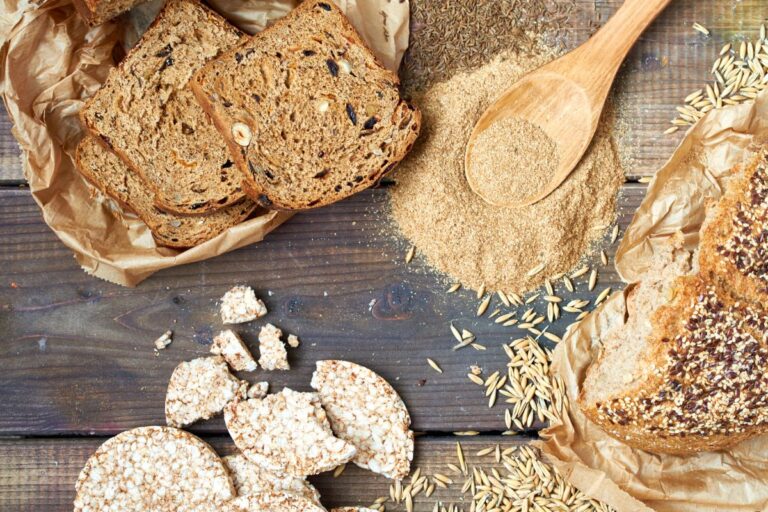We know many people who face mysterious allergies and have massive reactions to their faces or bodies. Most of them have Gluten allergies and need to opt for a Gluten-free diet to stay fit and healthy. Buy what is meant by Gluten exactly?
Gluten is a group of proteins found primarily in wheat and similar grains, for instance, rye, barley and oats. It is like a “glue” that helps food maintain its shape, giving bread and other baked goods a chewy texture and elasticity.
There are two main proteins in gluten:
- Gliadin – Responsible for the dough’s ability to rise.
- Glutenin – Contributes to the dough’s elasticity.
You can find gluten in general foods like bread, pasta, pizza, cereals, and many processed foods. It is also present in unexpected places, like sauces, soups, and certain medications or supplements.
Some people develop an intolerance to gluten after a certain age. This intolerance leads to celiac disease. It is an autoimmune condition in which gluten starts damaging the small intestine. Conversely, non-celiac gluten sensitivity is a food intolerance that leads to discomfort after eating gluten.
However, according to a recent research report, up to 30% of adults in the United States are trying to eliminate or reduce gluten from their diet. Interestingly, many of them do not even have celiac disease.
To avoid the repercussions of Gluten, you need to take timely action and opt for a healthy diet that does not contain traces of gluten. Let’s explore this phenomenon further to help you understand it clearly.
For more health-related blogs, visit here.
What Is Meant By Gluten-Free Diet?
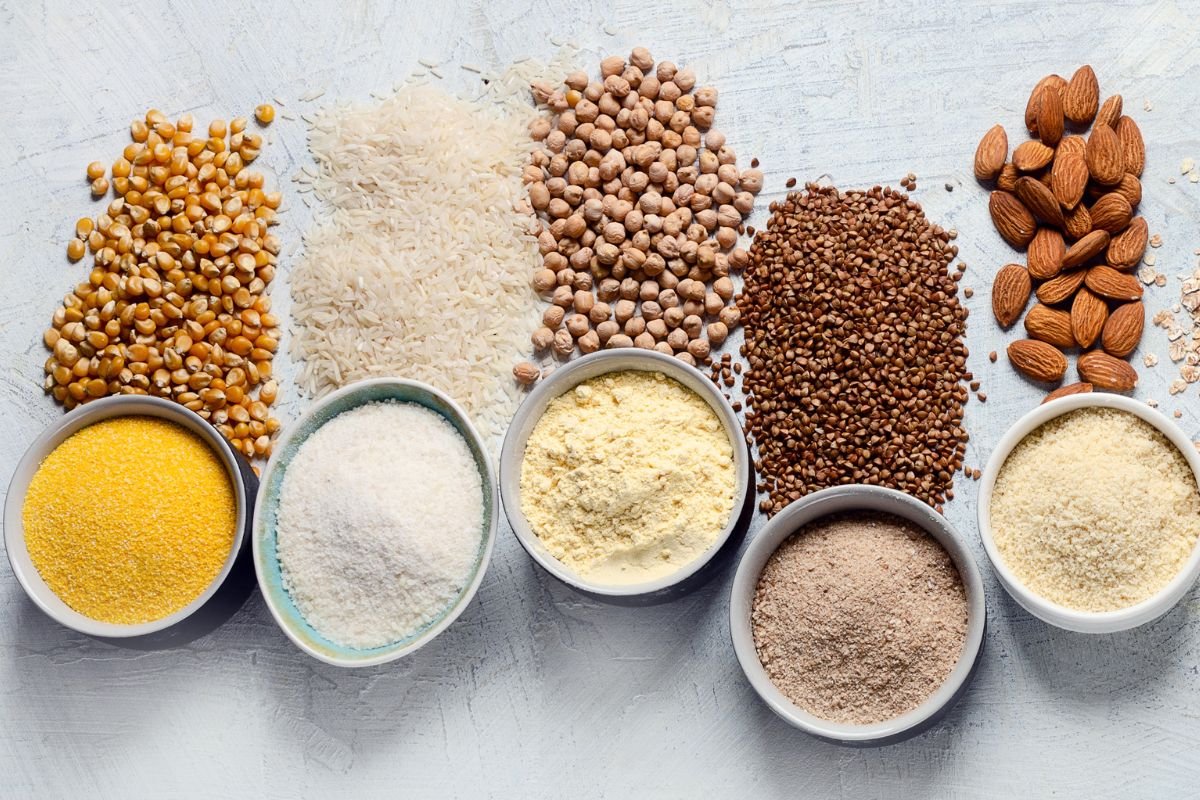
A gluten-free snack and food plan eliminates all foods containing gluten. This diet is essential for people with certain medical conditions but has also gained popularity among others seeking potential health benefits. People facing any intolerance to wheat or its counterparts must opt for this diet to stay healthy and energetic for a long time. Conversely, people with celiac disease must opt for this diet to become more productive.
Foods to Avoid
If you have Celiac disease, you must avoid all food items made with wheat or other gluten-containing grains. It also includes common foods and drinks like:
- Bread products (e.g., bagels, pizza dough)
- Pasta
- Breakfast cereals
- Pretzels
- Beer
- Cookies
- Cakes
- Crackers
Foods to Eat
Many foods are naturally gluten-free, including fruits, vegetables, lean, fresh meats, seafood, and dairy products. Some more are as follows.
- Amaranth
- Arrowroot
- Buckwheat
- Corn
- Flax
- Flours made from nuts, beans and/or seeds
- Millet
- Potatoes, potato starch and potato flour
- Quinoa
- Rice and rice bran
- Soy (but not soy sauce)
- Tapioca
Non-food everyday products that may contain gluten are as follows:
- lip gloss, lipstick, and lip balm
- play dough
- medications and supplements
- communion wafers
Benefits Of Gluten-Free Diet
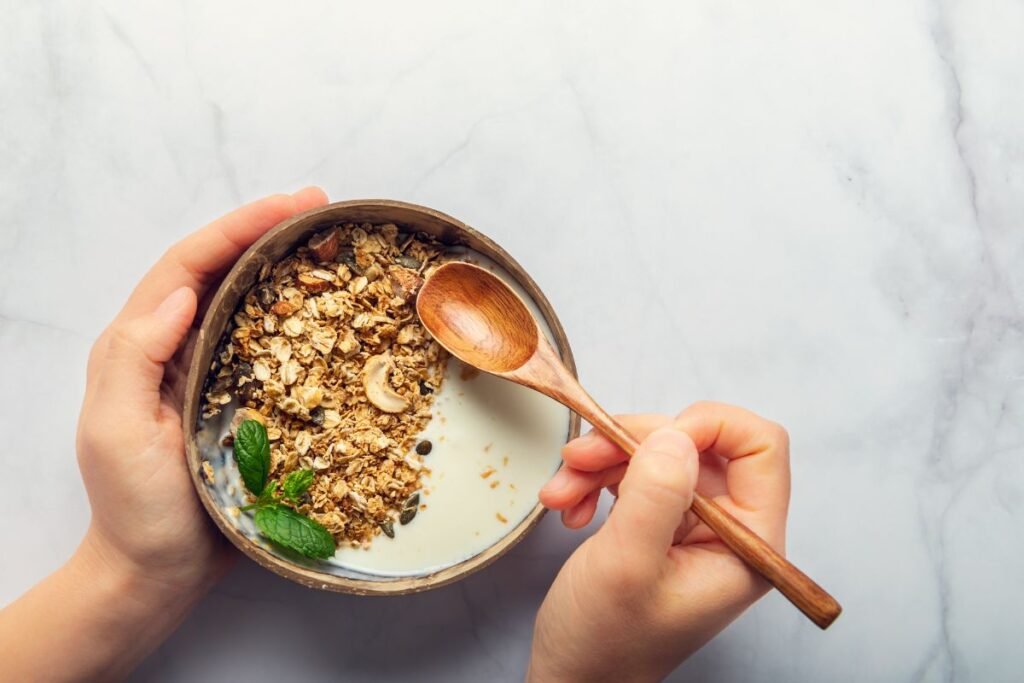
The gluten-free food plan has gained major popularity in recent years. While it’s often associated with celiac disease or intolerant people, many people follow it for various reasons, including perceived health benefits. Let’s delve into the advantages of this unique dietary approach.
1. Improved Gastrointestinal Health: For individuals with celiac disease or other gluten-related disorders, a gluten-free diet can alleviate symptoms like bloating, diarrhea, and fatigue. Reducing inflammation in the gut can promote better nutrient absorption and overall digestive health.
2. Enhanced Nutrient Absorption: A gluten-free nutrition and diet allows the gut lining to heal, enabling the body to absorb essential nutrients better that may have been hindered by gluten-related damage.
3. Potential Weight Loss: While not guaranteed, some people may experience weight loss on a GFD. This is often due to reduced overall food intake or substituting processed gluten-containing foods with healthier alternatives.
4. Potential Benefits for Brain Health: Emerging research and reports suggest that a GFD might help people with neurological, psychological, or cognitive conditions linked to gluten, alleviating symptoms and potentially preventing further brain damage.
Potential Demerits Of GFD And Lifestyle

While everything has a shiny side, it also has a dark side. GFD is one of the most celebrated diets among health-conscious people. However, it can have a few disadvantages that make it seem unworthy of the energy. Some of the possible demerits of GFD are as follows.
1. Risk of Nutrient Deficiencies: Many gluten-free alternatives, especially processed foods, may lack essential nutrients like fiber, folate, magnesium, potassium, and vitamin E. This is particularly concerning when whole wheat is replaced by refined grains like rice flour or potato starch.
2. Increased Risk of Heart Disease: Avoiding gluten unnecessarily can lead to reduced whole grain intake, increasing the risk of heart disease in individuals without celiac disease. Whole grains are rich in fiber and other heart-healthy nutrients.
3. Social and Psychological Impacts: Adhering to a GFD can be daunting, especially when dining out or attending social events. This can lead to feeling left out or isolated frustration, or difficulty managing social situations.
4. Higher Cost: Gluten-free products and snacks are often more expensive than their traditional counterparts, adding financial strain for those following the diet. If you have a tight food budget, you cannot opt for this kind of lifestyle without getting broke.
5. Higher in Calories and Fat: Processed gluten-free food products may be higher in calories and fat and lack the health benefits of a whole-food, balanced diet. Simply put, it can be beneficial for some, while it can cause even worse reactions for other sections of people.
Who Should Avoid a Gluten-Free Diet?
If there is no reason to remove gluten from the diet if a person has not been advised by their doctor to follow a medically prescribed gluten-free diet. Here is a list of people who must avoid GFD at any cost.
People with or at risk of eating disorders or disordered eating. People with low nutrient intakes or deficiencies, including:
- Fiber
- B-vitamins
- Iron
- Zinc
- Calcium
- Phosphorus
It is highly recommended that individuals do not embark on self-directed gluten-free diets, especially for extended periods. If you are unsure about your body or intolerances, contact your nearest nutritionist for professional advice.
Easy Gluten Free Recipes You Can Try At Home
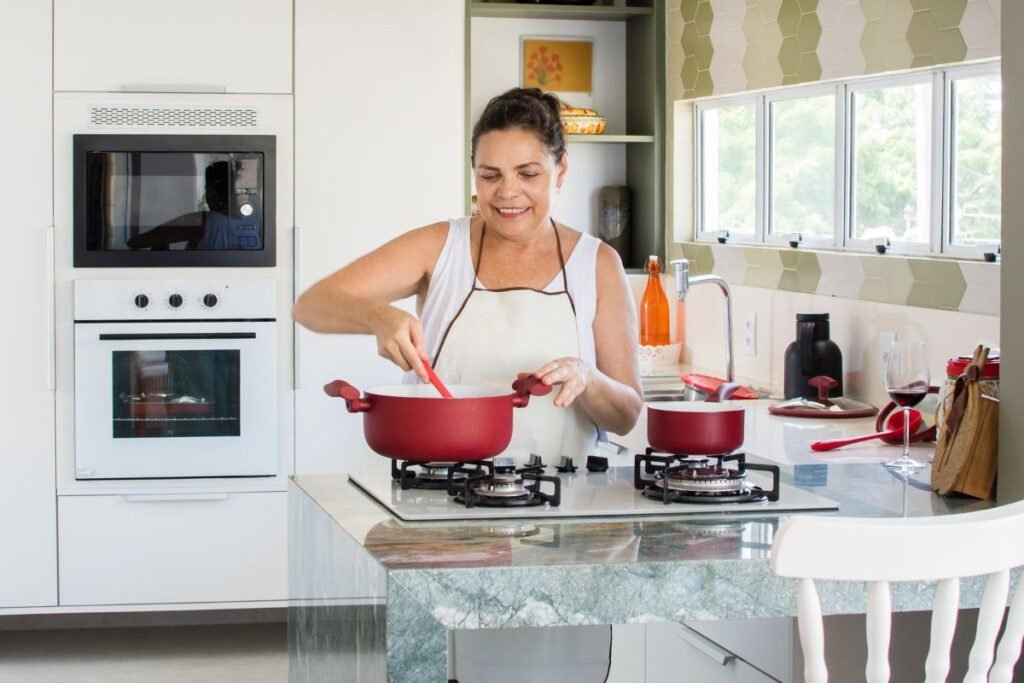
Living gluten-free does not mean you have to skip out on your favorites—far from it! Unsurprisingly, we are all about having our pasta, pizza, and tacos and eating them. So whether you are celiac, trying to accommodate party guests, or simply need to cut out gluten, we have plenty of amazing recipes that you will be surprised just happen to be gluten-free.
1. One-Pan Coconut-Lime Chicken

If creamy Tuscan chicken is a mainstay at your house, this recipe will just shake up your weeknight dinner routine. This recipe specifically pairs quick-cooking chicken cutlets with a spicy-sweet coconut milk sauce that is freakingly tasty. Tomatoes (and tomato paste) bring it back to Earth so you can repeat this (and over!). Another silver lining–Did we mention this comes together in just one pan in less than 30 minutes?! For the recipe, click here!
2. Classic Stuffed Peppers
Stuffed peppers are at the top of our list of all the food you can stuff. Bell peppers are large enough to hold a lot, strong enough to keep their shape in the oven, and mild enough in flavor to go with just about anything. This recipe makes you fill them with scrumptious beefy tomato rice and shredded Monterey Jack or cheddar cheese, but you can customize them to fit your taste. Here is a complete recipe for these tasty stuffed peppers!
3. Cacio E Pepe Sweet Potato Noodles
Are you looking to convert a spiralized veggie sceptic? Make them these cacio e pepe sweet potato noodles. Tossed in buttery black pepper sauce and showered with Parmesan and Pecorino, these sweet potato noodles are so delicious that no one will even ask for “regular” pasta. Sounds Tempting, right? Check out the recipe here and make pasta no one has ever made before!
4. Lemony Chicken & Potatoes With Feta
This exclusive recipe freshens up a classic dish, lemon chicken and potatoes, by adding the most flavorful olive, almond, and parsley sauce over the top. Prepared from the pan drippings, the sauce is simple to make without getting out an extra pot. The best part? This entire recipe is made in just one dish, making dinner (and cleanup) easier than ever. Feeling hungry right now? Read this recipe and make one pot to savor now!
5. Feta & Herb-Crusted Salmon
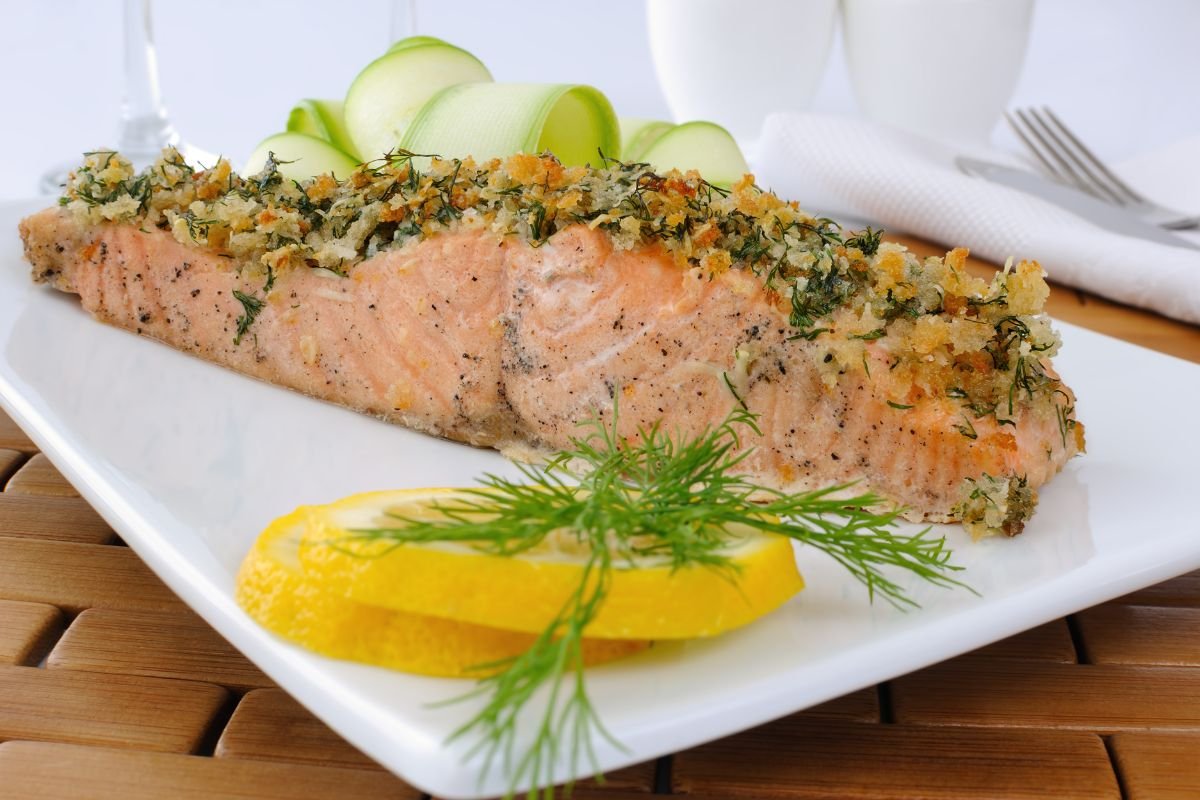
We know that salmon can be a little… intimidating. Trust us, though—you have just found the cooking method that will always work for you. This recipe covers a whole fish, rather than individual fillets, with fun and unique toppings to add flavors and textures all on just one sheet pan. Moreover, for this Mediterranean-inspired version, arrange your salmon on a sheet tray (lined with foil for the easiest cleanup), sprinkle on the toppings, and bake it for 25 minutes. No flipping, no sticking, and no mess! For a detailed recipe, click here!
6. Creamy Gochujang White Chicken Chili
This creamy, red-tinted take on a traditional white chicken chili incorporates sweet and savory gochujang sauce for a unique spin on a timeless winter dinner. It’s got lots of chili flavor without a ton of heat, which means that this dish can be savored by everyone in the family (even the spice-averse!). Whether you like spice or not, this recipe will make you its fan for life. Click here to read the recipe for this spectacular dish.
7. Esquites Corn Chowder
Esquites are iconic Mexican street foods from corn kernels, lime, mayo, and chili powder. This soup combines street food with corn chowder—the vital New England comfort food with loads of sweet corn, bacon, and potato. The warm, creamy soup and the cool, sweet, acidic esquites combine in one bowl to create a perfect texture, temperature, and flavor contrast. Here is a recipe for this tasty yet healthy soup option for your gluten-free friends.
8. Gazpacho With Burrata
Creamy burrata on top of a tomato and basil gazpacho is the most refreshing no-cook summer meal we can imagine. We also added a little yogurt to make this extra creamy and for just a little tang. This is traditionally a basic dish, but this recipe adds a little zing to it, making it more interesting and savory. Here is its recipe so you can have a little fun time without drifting away from your diet.
9. Chicken Tostadas
To make this chicken tostada recipe faster, you will use shredded rotisserie chicken and canned beans. For extra texture and flavor, spread a thin layer of refried canned beans on one tostada, then top with a second. Top with more refried beans, the chicken, and the rest of your favorite toppings. Here is the recipe for chicken tostadas, making your breakfast or evening snack time more flavorful.
10. Caprese Chicken & Polenta Bake
Gnocchi lovers, this dish is for you. However, it has a little spin—instead of using gnocchi made from potatoes, it is prepared with polenta gnocchi, making it naturally gluten-free. While we could go all carbs all the time, we chose a meal-in-one casserole instead, adding chicken cutlets and spinach to complement the dish. Is this making you crave this amazing recipe? Here you go and savor it for life.
11. Slow-Cooker Creamy Chicken & Potato Soup
A warm and creamy soup with very minimal effort is our ideal dinner. Prep everything in the morning and then come home at night to this delightful soup that will please everyone. You do not need to sear or use any other skillet. It is hearty, filling, and just what you need to lift your spirits. The slow cooker makes the chicken fall apart while making the potatoes creamy and tender. Use your favorite curry powder to spice up the dish and make it even more comforting. If you aren’t a fan of kale, you can always use spinach or Swiss chard instead! Here is a recipe for tasty chicken and potato soup!
So, Is Gluten-Free Right For You?
The decision to opt for a gluten-free lifestyle is personal. If you have celiac disease, it’s a necessity. For those with NCGS or other digestive issues, it may be worth trying to see if eliminating gluten provides relief. However, it’s important to weigh the potential benefits against the possible drawbacks and consult with a professional before making significant dietary changes.
Remember, a gluten-free diet is not a magical solution for all health problems. It’s about making informed choices and ensuring your diet is balanced and nutritious.
FAQs
What do gluten-free people eat?
To remain healthy, people with gluten intolerance eat rice, dairy products, potatoes, chicken, fish, and gluten-free flour.
What foods have gluten?
Barely-based drinks, bread, wheat, cakes, candies, cereals, and crackers have the highest amount of gluten that can disturb intolerant people.
What is meant by gluten and why do people avoid it?
Gluten is a unique protein found in many grains, including wheat, barley, and rye. It is common in bread, pasta, pizza, and cereal. People with celiac disease experience a disturbance and severe immune reaction when they eat gluten.
What is gluten to the body?
Undigested gluten makes its way to the small intestine. In some people, gluten can trigger a serious autoimmune response or unpleasant symptoms like diarrhea or allergic reactions. Conversely, some people handle gluten without any severe symptoms.

